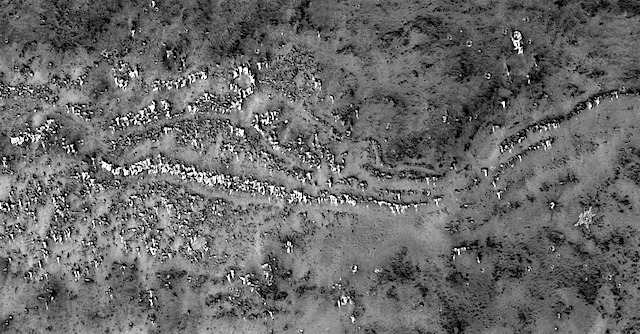 Channels in Syria Planum. The objective of this observation is to determine the nature of a curved channel with levees.
Channels in Syria Planum. The objective of this observation is to determine the nature of a curved channel with levees.
Beautiful Mars series. [More at links]
 Channels in Syria Planum. The objective of this observation is to determine the nature of a curved channel with levees.
Channels in Syria Planum. The objective of this observation is to determine the nature of a curved channel with levees.
Beautiful Mars series. [More at links]
 THEMIS Image of the Day, November 19, 2018. Today’s VIS image shows one of the numerous channel features that dissect the highlands between Solis Planum and Aonia Terra. The linear features in the region include both tectonic graben and fluvial channels.
THEMIS Image of the Day, November 19, 2018. Today’s VIS image shows one of the numerous channel features that dissect the highlands between Solis Planum and Aonia Terra. The linear features in the region include both tectonic graben and fluvial channels.
 Sol 2233-35, November 16, 2018, update by MSL scientist Abigail Fraeman: It’s the windy season on Mars, and Curiosity’s activities this weekend include taking oodles of images at different times throughout the day to catch how the wind moves sand and dust around. We’ll be taking 15 separate Mastcam images of both the “Sand Loch” and “Windyedge” areas throughout the weekend, as well as several MARDI images to monitor changes on the ground underneath the vehicle. A similar campaign we did back at the Bagnold Dunes helped refine models of regional-scale wind patterns at Gale and provided important insights into the physics of how sand moves under the modern day Martian atmosphere… [More at link]
Sol 2233-35, November 16, 2018, update by MSL scientist Abigail Fraeman: It’s the windy season on Mars, and Curiosity’s activities this weekend include taking oodles of images at different times throughout the day to catch how the wind moves sand and dust around. We’ll be taking 15 separate Mastcam images of both the “Sand Loch” and “Windyedge” areas throughout the weekend, as well as several MARDI images to monitor changes on the ground underneath the vehicle. A similar campaign we did back at the Bagnold Dunes helped refine models of regional-scale wind patterns at Gale and provided important insights into the physics of how sand moves under the modern day Martian atmosphere… [More at link]
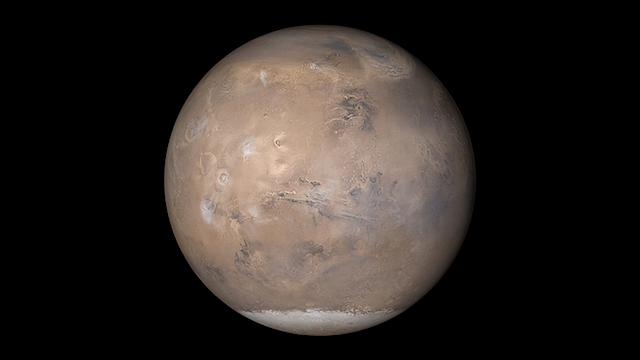 NASA will host a media teleconference at 9 a.m. PST (noon EST) Monday, Nov. 19, to provide details about the Mars 2020 rover’s landing site on the Red Planet.
NASA will host a media teleconference at 9 a.m. PST (noon EST) Monday, Nov. 19, to provide details about the Mars 2020 rover’s landing site on the Red Planet.
The rover, currently under construction at NASA’s Jet Propulsion Laboratory (JPL), will address high-priority science goals for Mars exploration, including key questions about the potential for ancient life on Mars. The rover’s arrival also will set the stage for NASA’s Mars exploration for the next decade by collecting samples and caching them on the surface for a future mission that could retrieve and return them to Earth for extensive study. Mars 2020 will also further aid in NASA’s preparations for a crewed mission to the Red Planet.
The teleconference participants are:
• Thomas Zurbuchen, associate administrator of NASA’s Science Mission Directorate
• Lori Glaze, acting director of NASA’s Planetary Science Division
• Michael Meyer, lead scientist for NASA’s Mars Exploration Program
• Ken Farley, Mars 2020 project scientist at JPL
Questions can be submitted via Twitter during the teleconference using the hashtag #askNASA… [More at link]
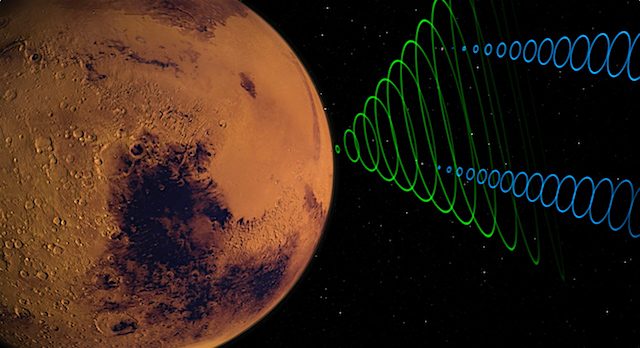 What’s the sound of a touchdown on Mars? If you’re at NASA’s Jet Propulsion Laboratory, it sounds like winning the Super Bowl: cheers, laughter and lots of hollering.
What’s the sound of a touchdown on Mars? If you’re at NASA’s Jet Propulsion Laboratory, it sounds like winning the Super Bowl: cheers, laughter and lots of hollering.
But in the minutes before that, NASA’s InSight team will be monitoring the Mars lander’s radio signals using a variety of spacecraft — and even radio telescopes here on Earth — to suss out what’s happening 91 million miles (146 million km) away.
Because these signals are captured by several spacecraft, they’re relayed to Earth in different ways and at different times. That means the mission team may know right away when InSight touches down, or they may have to wait up to several hours.
Here’s how NASA will be listening for the next Mars landing on Nov. 26.
Radio Telescopes
As the InSight lander descends into Mars’ atmosphere, it will broadcast simple radio signals called “tones” back to Earth. Engineers will be tuning in from two locations: the National Science Foundation’s Green Bank Observatory in Green Bank, West Virginia and the Max Planck Institute for Radio Astronomy’s facility at Effelsberg, Germany. Their results will be relayed to Mission Control at JPL and engineers at Lockheed Martin Space in Denver…. [More at link]
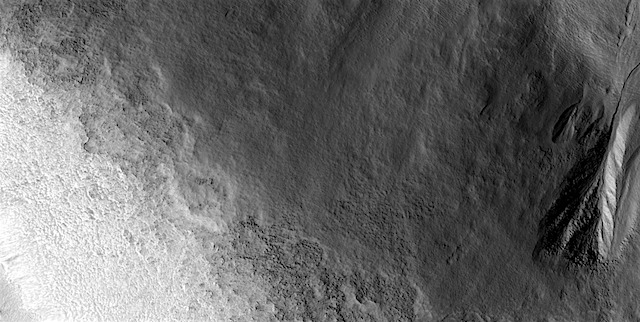 Gullies and crevasses on a mesa. Beautiful Mars series. [More at links]
Gullies and crevasses on a mesa. Beautiful Mars series. [More at links]
 THEMIS Image of the Day, November 16, 2018. Multiple gullies dissect the rim of this unnamed crater in Terra Cimmeria. The soft-looking material at the foot of the rim (where it meets the crater floor) may contain buried ice.
THEMIS Image of the Day, November 16, 2018. Multiple gullies dissect the rim of this unnamed crater in Terra Cimmeria. The soft-looking material at the foot of the rim (where it meets the crater floor) may contain buried ice.
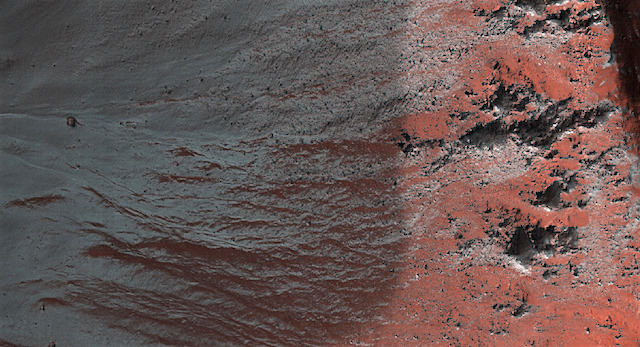 Monitoring frost in Raga Crater. We’re watching frost up-slope from known new gully flows in Raga. These appear to be distinct from recurring slope lineae we’ve seen in other craters.
Monitoring frost in Raga Crater. We’re watching frost up-slope from known new gully flows in Raga. These appear to be distinct from recurring slope lineae we’ve seen in other craters.
Beautiful Mars series. [More at links]
 Sol 2231-32, November 14, 2018, update by MSL scientist Scott Guzewich: It’s SAM day for our Highfield drill target! Today we planned to deliver a sample of the ground up rock from our Highfield drill hole to the SAM instrument. The rover will open one of its SAM inlet covers and the arm will be moved over to the top of it and then the drill bit will be reversed in a way that will trickle some finely-ground rock powder down into SAM. Then SAM will heat that rock to very high temperatures and measure the chemical compounds that make up Highfield. This is key to understanding what the Vera Rubin Ridge is made of and its formation history. [More at link]
Sol 2231-32, November 14, 2018, update by MSL scientist Scott Guzewich: It’s SAM day for our Highfield drill target! Today we planned to deliver a sample of the ground up rock from our Highfield drill hole to the SAM instrument. The rover will open one of its SAM inlet covers and the arm will be moved over to the top of it and then the drill bit will be reversed in a way that will trickle some finely-ground rock powder down into SAM. Then SAM will heat that rock to very high temperatures and measure the chemical compounds that make up Highfield. This is key to understanding what the Vera Rubin Ridge is made of and its formation history. [More at link]